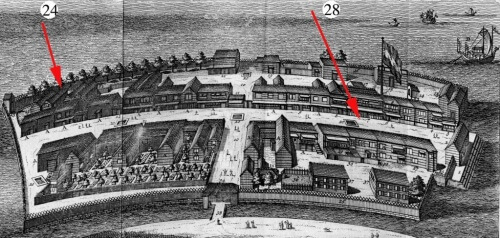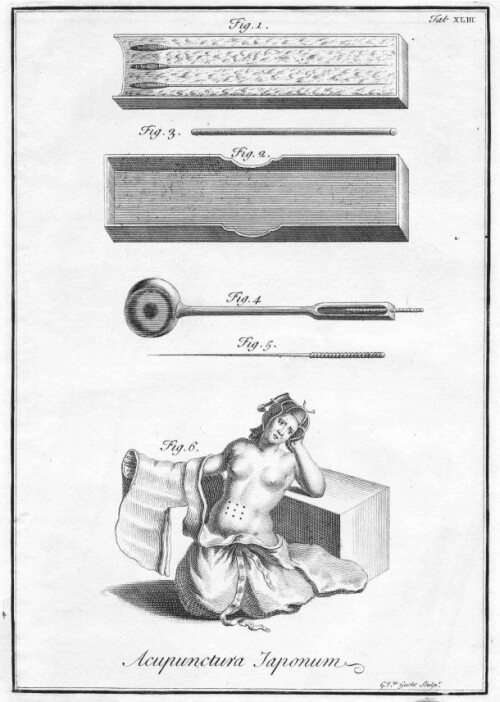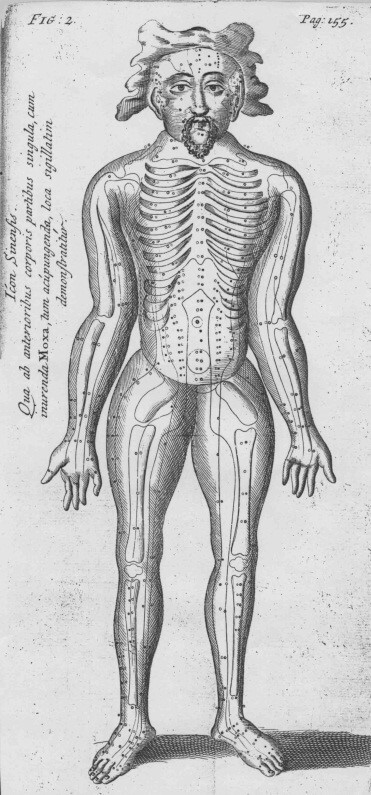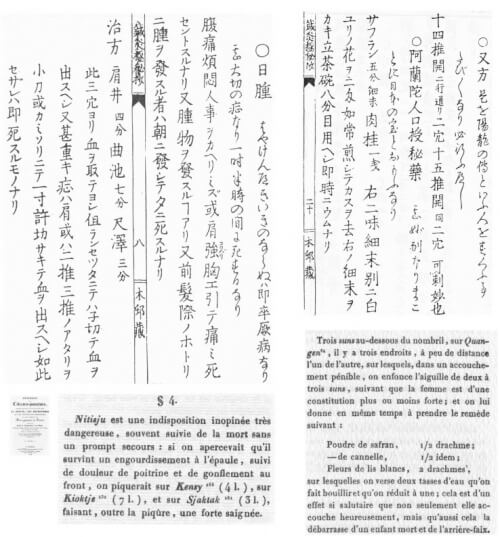Japanese Acupuncture and Moxibustion introduced to Europe
A Sketch of Acupuncture and Moxibustion Introduced to Early Modern Europe from Japan
Japan’s Position in Eastern – Western Medical Exchange
Until the beginning of the 19th century most of the information about Eastern medicine (Oriental medicine) entering into Europe came not from China but from the Nagasaki Dejima Trading Company in Japan.
The bearers of this information were the doctors and the scholarly inclined head of the Dutch East India Company’s trading post. Due to lack of information and language barriers the Dutch as yet lacked a consciousness of various aspects of East Asian culture and knowledge and thus told Europe that the acupuncture and moxibustion observed in Japan were “common traditional medicines for Japan and China.”
However, it included the instances of unique Japanese practices, and sometimes we can find even elements of Dutch medicine which the Japanese had incorporated into their own practice.

#24 is the hospital, #28 is the surgeon’s house
Thomas Salmon: Hedendaagsche Historie of Tegenwoordige Staat van Alle Volkeren 1792
“Guide Tube Acupuncture Insertion Method” and “Tapping Acupuncture Insertion Method”
The works of the German physician Engelbert KAEMPFER (1651-1716) who visited Japan in 1690 mentioned “guide tube acupuncture insertion method” and “tapping acupuncture insertion method” which were invented in Japan in addition to “twisting acupuncture insertion method” from China.
SUGIYAMA Waichi, who lost his eyesight as a child, tried hard but failed to master the twisting acupuncture insertion method and later devised the “guide tube acupuncture insertion method”, which allowed him to gauge the depth of the needle insertion. Today stainless steel and plastic insertion guide tubes are used throughout the world.
“Tapping acupuncture insertion method” was devised in the latter 16th century by the monk MUBUN. He ignored the usual meridian system and diagnosed and treated only the abdominal area. His insertion method was disseminated by MISONO Isai believed to be his son.

Example of treatment points for “colic” (疝痛)
KAEMPFER was told that this condition was characterized by a belt of stagnated Ki (Qi) in the abdominal area. He regarded this as colic and concluded that the tapping of the needle released gas in the intestine.
Engelbert Kaempfer: History of Japan 1727
“Keiraku (Meridians)” and “Ki (Qi)”
The western doctors who had to depend on the Dutch at Dejima Company for language were troubled by the translating of the meaning of “Keiraku” and “Ki”. They interpreted “Keiraku” as arteries and veins, and “Ki” as steam, gas or pneuma until the latter part of the 18th century.

Willem ten RHIJNE (1647-1700), who visited Japan in 1674, explained “acupuncture techniques” in Latin, where “acus” means needle, “pungere” means to stick and through his work “Discussion of Arthritis” this expression was disseminated throughout Europe. However, the illustration he obtained “Dōjin-yuketsu-shinkyū-zukyō” (“銅人腧穴鍼灸図経” by WANG Wei Yi (王唯一) was erroneously identified as “the anatomical charts depicting arteries (arteriae) and veins (venae)”
Willem ten RHIJNE: De Arthritide, 1683
The West in the East
OGINO Genkai, medical minister of Kyoto (1737-1806) witnessed dissections of the corpses of executed criminals and studied drugs and blood-letting administrated by red-haired (western) people.
KIMURA Motosada, who wrote “Shinkyū-gokuhi-shō” (鍼灸極秘抄) was OGINO’s student and also a unique physician. The Dutch language version of “Shinkyū-gokuhi-shō” introduced to Europe by Isaak TITSINGH (1745-1812) head of the Trading Company was widely read at the beginning of the 19th century during the acupuncture boom in France as the “typical Chinese/Japanese traditional medicine.” However, lost in the translation, were the sources and uniqueness of KIMURA, who was well versed in western medicine.
Therefore, western drug therapy and blood-letting therapy were introduced to Europe as if they were Chinese / Japanese traditional medicine.

Right: The title of “Memorandum of Electrical Acupuncture Technique” (“電気鍼術の覚書”), masterpiece of French physician Jean-Baptiste SALANDIERE published in 1725.
In the appendix, there is a thesis titled “Thesis on acupuncture and moxibustion which are the main therapies for Japanese, Korean and Chinese people”.
Wolfgang MICHEL, M.A., PhD
Professor emeritus, Kyushu University,
Doctor of Cultural Sciences